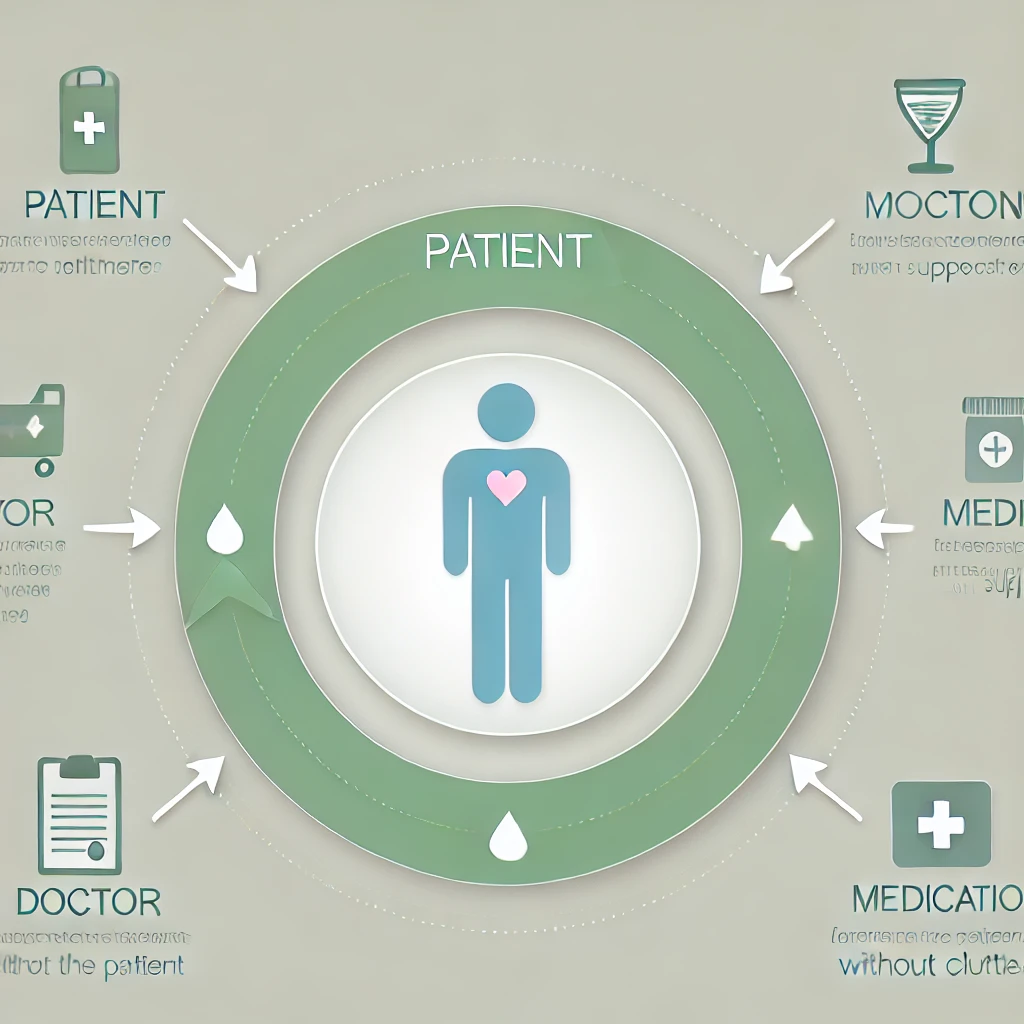Patient-centred healthcare means putting the patient’s needs, values, and preferences at the heart of their care. Instead of treating just the illness, doctors focus on the whole person, including their lifestyle, emotions, and concerns. Patients and doctors work together to make decisions, with clear communication and respect for the patient's choices. This approach helps patients feel understood, involved, and supported, improving health outcomes and satisfaction.
Empathy and Respect: Patient-centered care prioritizes empathy, understanding each patient's unique needs, beliefs, and values, fostering a respectful and supportive environment.
Active Patient Involvement: Patients are empowered to take an active role in their care decisions. Their preferences, goals, and lifestyle choices guide the treatment approach, making them partners rather than passive recipients.
Holistic Approach: This model treats the patient as a whole, considering physical, emotional, mental, and social factors. A comprehensive perspective improves outcomes by addressing underlying issues and supporting overall well-being.
Clear Communication: Effective communication is essential, with healthcare providers giving clear, jargon-free explanations. Patients should feel comfortable asking questions and expressing concerns without feeling rushed or dismissed.
Personalized Care Plans: Care is tailored to each patient’s individual health status, lifestyle, and treatment goals, ensuring that solutions are appropriate and sustainable for their unique situation.
Continuity of Care: Patient-centered care emphasizes continuous support and follow-up. It builds long-term patient-provider relationships, which improve trust, adherence, and healthcare outcomes.
Access to Health Information: Patients are given access to their health records and informed about their conditions. This transparency helps them understand their health better and promotes shared decision-making.
Respecting Patient Autonomy: Patients are encouraged to make informed decisions about their treatment options, with full respect for their choices, even if they differ from standard recommendations.
Enhanced Patient Satisfaction: By prioritizing patients’ comfort and preferences, patient-centered care often leads to higher satisfaction rates, which can be a strong indicator of healthcare quality.
Supportive Care Environment: Healthcare providers create an environment where patients feel safe, understood, and supported, which helps reduce anxiety and enhances the healing process.
Multidisciplinary Collaboration: This approach often involves a team of healthcare providers working together, combining their expertise to offer well-rounded, coordinated care for each patient.
Outcome-Oriented Approach: Patient-centered care focuses on achieving the best possible health outcomes, valuing quality of life as much as traditional clinical measures.
Reduced Healthcare Costs: Patient-centered care can lower overall healthcare costs by promoting preventative care, reducing unnecessary interventions, and minimizing hospital readmissions.
This approach is at the heart of modern healthcare reform, aiming to make healthcare more responsive, compassionate, and effective for patients.

